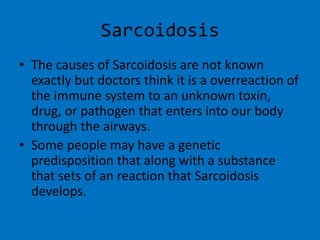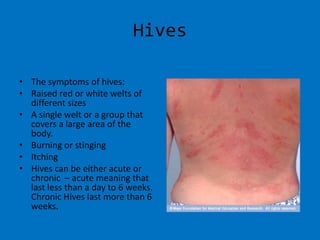Hodgkin's disease is a type of cancer that affects the lymphatic system. It usually affects the lymph nodes, spleen, liver and bone marrow. Symptoms include swollen lymph nodes, fever, night sweats and weight loss. It is diagnosed through biopsies of swollen lymph nodes and imaging tests. Stages range from stage I involving one lymph node to stage IV involving multiple organs. Treatments include chemotherapy, radiation and stem cell transplants.
















